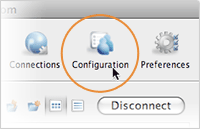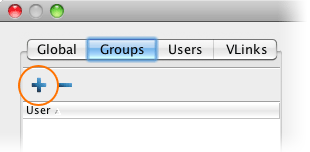Create system groups on your computer, and set up transfer settings for the group and its members.
You can set up transfer settings based on your system's user groups. If users within a group do not have individual transfer settings, then the group's transfer settings will be applied. Please note that Connect Server doesn't create user groups on the Operating System for you, so you must ensure that the groups currently exist before adding them to your Aspera product. Follow the steps below to add user groups to Connect Server.

